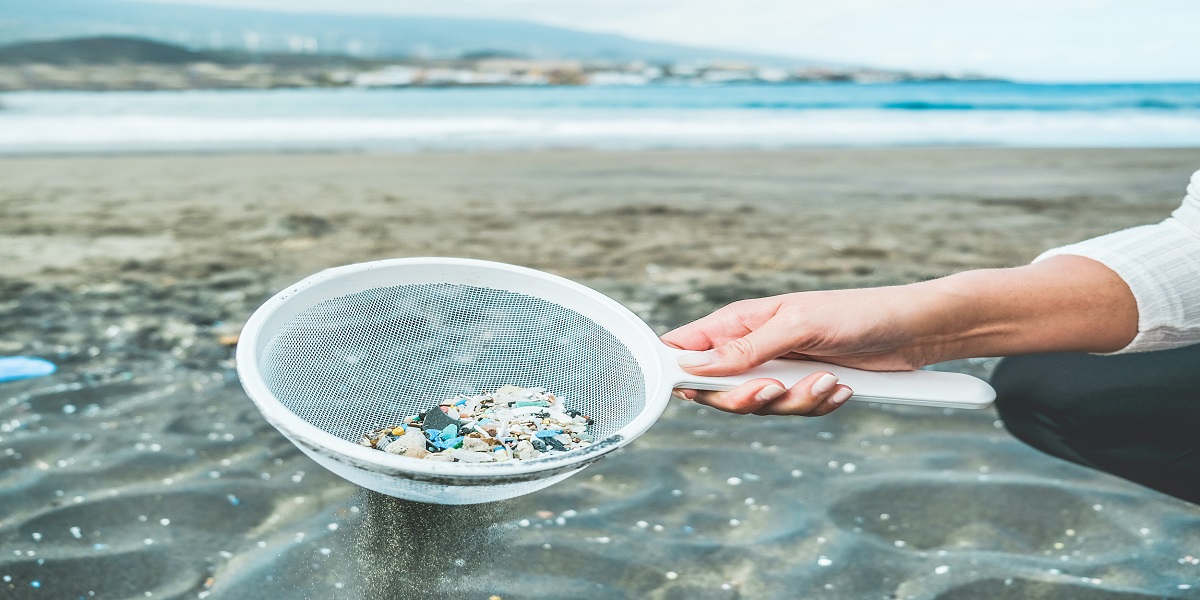A dedicated group of researchers led by the University of McGill has released new technology capable of real-time detection and analysis of nanoplastic in water, marking a watershed moment in environmental science. This breakthrough advancement has the potential to transform how we handle the worldwide issue of plastic pollution by providing unparalleled capabilities for recognizing and tracking micro- and nanoplastics in aquatic ecosystems.
Publication and Research Background:
The study, “nanoplastics in water: AI intelligence-assisted 4D physicochemical characterization and rapid in situ Identification” in Environmental Science & Technology, addresses the serious issue of plastic pollution. Microplastics, defined as plastic fragments ranging from 1 micrometer to 5 millimeters, and even tiny nanoplastics, measuring just a few nanometers, increasingly infiltrate marine and freshwater habitats worldwide. Conventional techniques for detecting such particles are limited, preventing thorough knowledge and effective mitigating measures.
Microplastics, which resemble rice grains in size, are widespread contaminants found in the world’s rivers, oceans, and lakes. Nanoplastics, which are exponentially smaller, pose an even greater problem due to their minute dimensions (about 0.000001 millimeters per nanometer). A human hair is around 80,000 to 100,000 nanometers long. The detection and examination of nanoplastics have proven particularly difficult, demanding novel methodologies to differentiate and quantify their existence in aquatic environments reliably.
Technological Innovation:
The McGill-led research team has proposed an artificial intelligence-powered invention that aims to solve the inadequacies of current detection approaches. This technology, known as AI-Assisted Nano Digital In-line Holographic Microscopy (AI-Assisted Nano-DIHM), is a significant advancement in environmental monitoring capabilities. AI-Assisted Nano-DIHM uses artificially intelligent (AI) and sophisticated microscopy techniques to detect and differentiate nanoplastics and microplastics in real-time, on-site, among varied watery particles.
AI-Assisted Nano-DIHM is based on the premise of nanodigital consistent holographic microscopy, an innovative imaging technique that produces high-resolution holograms of minute particles. When combined with AI algorithms trained to distinguish various physicochemical fingerprints of plastics, this technique independently recognizes and classifies nanoplastics and microplastics with high accuracy. This capacity not only increases the accuracy of environmental monitoring activities, but also gives critical information about the shipment, behavior, and effect of plastic pollution in aquatic environments.
Environmental Monitoring Implications:
Professor Parisa Ariya, a major figure in atmospheric and marine studies at the University of McGill and the study’s chief investigator, underlines the revolutionary power of AI-assisted Nano-DIHM in combating plastic pollution. By allowing for real-time examination of plastic fragments, the technique enables academics and environmental authorities to identify contamination “hotspots,” track contamination paths, and apply tailored mitigation efforts. This preventive approach is critical for protecting marine biodiversity, water quality, and ecosystem functioning in the face of rising plastic contamination.
Outlining Global Plastic Pollution:
The UNEP (United Nations Environment Programme) cites worrisome data, claiming that approximately 2,000 garbage trucks worth of plastic debris enter the world’s rivers, oceans, and lakes each day. Plastic pollution offers significant ecological risks, ranging from entanglement and eating by marine creatures to chemical poisoning of aquatic environments. Despite these obstacles, thorough evaluation and supervision of nanoplastics are hampered by the limits of traditional analytical methods.
Case Studies:
Initial field studies in important water bodies like as Lake Ontario and the St. Lawrence River demonstrate the usefulness of AI-Assisted Nano-DIHM in actual environmental applications. By successfully detecting and measuring micro- and nanoplastics in natural fine particles, the method provides essential information about pollution processes and ecological consequences. These case studies provide compelling examples of AI-assisted Nano-DIHM’s operating adaptability and dependability in a variety of aquatic situations.
Cooperation and Future Prospects:
The development of AI-assisted Nano-DIHM exemplifies innovative cooperation between universities, research centers, and government agencies, as demonstrated by McGill University’s collaboration with the National Research Council of Canada. This collaborative synergy promotes interdisciplinary research efforts targeted at strengthening environmental monitoring technology, improving scientific understanding, and guiding evidence-based policymaking on a worldwide scale.
Beyond its immediate uses in environmental evaluation, AI-assisted Nano-DIHM has enormous potential for disruptive influence across a variety of industries. The technology’s capacity to identify and analyze nanoplastics and microplastics offers possibilities for improved water quality evaluation, efficient use of resources, and public health protection. Furthermore, by supporting early intervention and restoration procedures, AI-Assisted Nano-DIHM helps to reduce the harmful consequences of plastic pollution on human health, the environment, and socioeconomic well-being.
Conclusion:
In conclusion, the launch of AI-Assisted Nano-DIHM represents an important turning point in the ongoing fight against plastic pollution. This pioneering technology not only pushes the boundaries of both environmental science and engineering but also represents a paradigm shift toward proactive, data-driven solutions to global sustainability concerns. As AI-assisted Nano-DIHM evolves and integrates into mainstream monitoring and evaluation frameworks, the opportunity to protect aquatic ecosystems, reduce plastic-related impacts, and promote sustainable development is unrivaled. Stakeholders may work together to make the planet cleaner and healthier for present and future generations by using creativity, cooperation, and scientific rigor.

